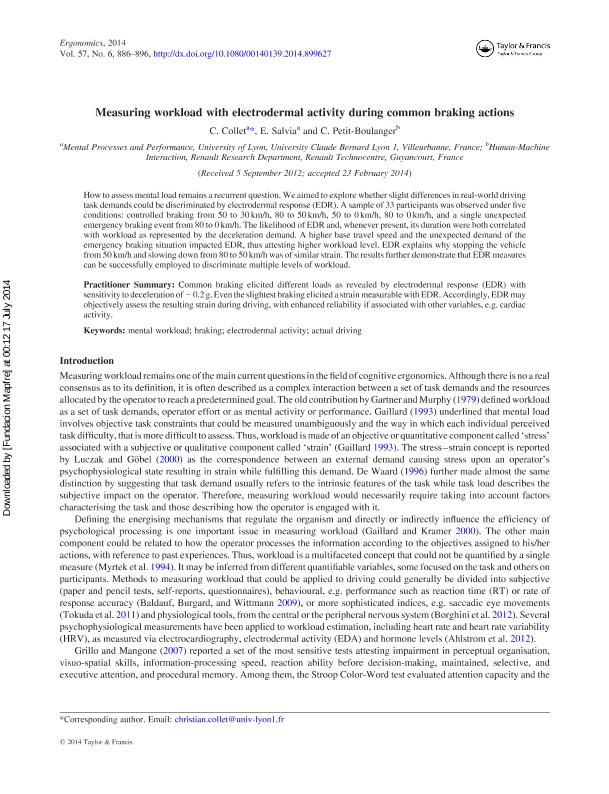Measuring workload with electrodermal activity during common braking actions

Contenido multimedia no disponible por derechos de autor o por acceso restringido. Contacte con la institución para más información.
| Tag | 1 | 2 | Valor |
|---|---|---|---|
| LDR | 00000cab a2200000 4500 | ||
| 001 | MAP20140025749 | ||
| 003 | MAP | ||
| 005 | 20140724124910.0 | ||
| 008 | 140717e20140602esp|||p |0|||b|spa d | ||
| 040 | $aMAP$bspa$dMAP | ||
| 084 | $a875 | ||
| 100 | $0MAPA20100034446$aCollet, C. | ||
| 245 | 1 | 0 | $aMeasuring workload with electrodermal activity during common braking actions$cC. Collet, E. Salvia, C. Petit-Boulanger |
| 520 | $aHow to assess mental load remains a recurrent question. We aimed to explore whether slight differences in real-world driving task demands could be discriminated by electrodermal response (EDR). A sample of 33 participants was observed under five conditions: controlled braking from 50 to 30 km/h, 80 to 50 km/h, 50 to 0 km/h, 80 to 0 km/h, and a single unexpected emergency braking event from 80 to 0 km/h. The likelihood of EDR and, whenever present, its duration were both correlated with workload as represented by the deceleration demand. A higher base travel speed and the unexpected demand of the emergency braking situation impacted EDR, thus attesting higher workload level. EDR explains why stopping the vehicle from 50 km/h and slowing down from 80 to 50 km/h was of similar strain. The results further demonstrate that EDR measures can be successfully employed to discriminate multiple levels of workload. | ||
| 773 | 0 | $wMAP20100019818$tErgonomics : the international journal of research and practice in human factors and ergonomics$dOxon [United Kingdom] : Taylor & Francis, 2010-$x0014-0139$g02/06/2014 Volumen 57 Número 6 - junio 2014 |

